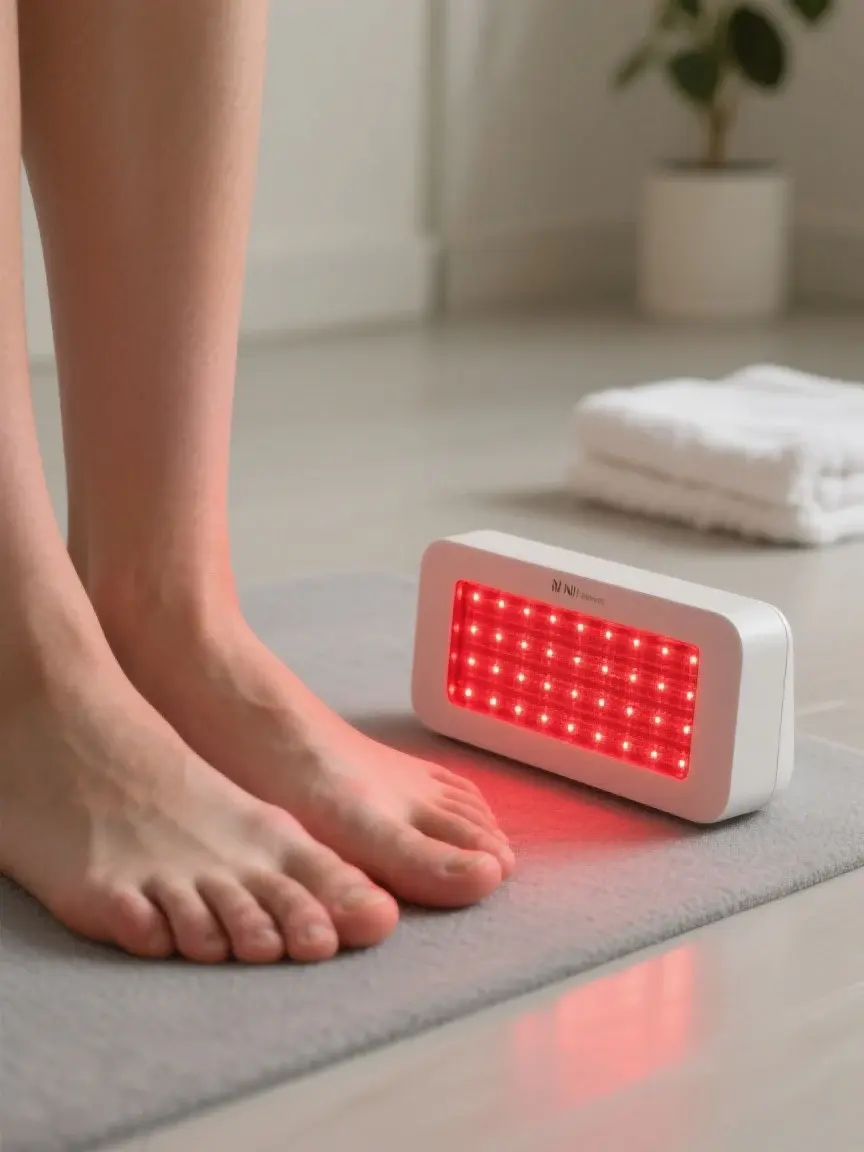Healing Peripheral Neuropathy: What Happens When We Subtract the Sun
- Luc

- Aug 14
- 4 min read
Crafted by Timekeeper

Introduction: What Happens When We Subtract the Sun?
Peripheral neuropathy isn’t only about damaged nerves — it’s often about underpowered mitochondria, disrupted circadian biology, and a broken relationship with natural light. When we subtract the sun, we subtract a major input for cellular repair — and often, the possibility of healing.
Sunlight isn’t just warmth or brightness; it’s information. Biological information. Light coordinates timing, hormone release, mitochondrial signaling, and nervous system function. Its absence isn’t neutral — it’s disruptive.
The UVA–mTOR–Mitochondria Interplay: Sunlight as a Repair Signal
Sunlight is more than illumination; it’s a biological signal that sets cellular repair programs into motion.
Morning UVA exposure helps tune light-sensitive pathways that support NAD+ balance and sirtuin activity, which are linked to mitochondrial upkeep and DNA repair.
These cues activate AMPK and modulate mTOR, nudging the body toward autophagy, mitophagy, and mitochondrial biogenesis — the cleanup-and-rebuild work nerves need.
Red and near-infrared (NIR) wavelengths (620–660 nm and 800–850 nm) interact with cytochrome c oxidase in mitochondria to boost ATP production and reduce oxidative stress.
Photobiomodulation (PBM) — the targeted use of red/NIR light — can complement natural light when dosed correctly.

Quantum-Coherent Biology (In Plain English)
Humans are light-sensitive organisms. Beyond just chemistry, our cells communicate using timing, charge, and faint ultraweak photon emissions.
Two big takeaways:
Melanin and antioxidants buffer reactive oxygen species and protect DNA — especially when your light exposure is aligned with circadian and seasonal cycles.
Melatonin, mostly made inside mitochondria across the body, powers repair, modulates the immune system, and helps us adapt to seasonal changes.
When we subtract the sun, we impair both of these processes — weakening our cellular communication and resilience.
What Blocks Healing in Modern Environments
Modern life filters or blocks the signals our biology expects:
Sunglasses or sunscreen overuse blunts morning UVA cues.
Blue light at night from screens disrupts melatonin and circadian timing.
Indoor living, non-native EMFs, and poor daylight exposure flatten natural cycles.
Glass filters sunlight, altering the spectrum and stripping key signals.
The result? We stay sick — not because healing is impossible, but because key light-based inputs are absent.
This is the true cost when we subtract the sun from our daily lives.
What To Do Instead: Reintroduce Natural Light
If you’re facing peripheral neuropathy or other mitochondria-related conditions, start by restoring your relationship with light:
Morning Light: Get natural sunlight in your eyes and on your skin within 30–60 minutes after sunrise. Avoid sunglasses, windows, and windshields.
After Sunset: Reduce screen time and switch to low-blue or amber lighting.
PBM (Red/NIR Light): Use therapeutic light when outdoor access is limited or for targeted support.
Circadian Support: Align meals, movement, and sleep with your light-dark cycle.
Protect Sleep: Darkness at night, consistent sleep/wake times, and morning sun to reset your clock.
PBM Dosing Cheat Sheet for Neuropathy
Wavelengths: 660 nm (red) + 850 nm (NIR)
Dose: 20–30 J/cm² per area for chronic neuropathy
Time Formula:Time (seconds) = (J/cm² × 1000) ÷ Device irradiance (mW/cm²)Example: 20 J/cm² ÷ 50 mW/cm² = ~400 seconds (~6–7 minutes)
Frequency: 3–5x weekly for 4–12 weeks (daily if acute)
Areas: Feet, hands, along nerve paths, and spine (if involved)
Safety: Avoid overtreatment (>50 J/cm²); protect eyes from strong NIR
Final Word: Don't Subtract the Sun
We are light-regulated beings. Our bodies are tuned to respond to sunlight’s spectrum, timing, and intensity. Replacing the sun with artificial light and endless screen time isn’t progress — it’s a modern mismatch.
Healing peripheral neuropathy isn’t just about medications or supplements — it’s about restoring biological coherence. And that starts when we stop subtracting the sun from our healing equation.
Frequently Asked Questions (FAQs)
What does “Subtract the Sun” mean for nerve healing?
It means removing a key biological input — full-spectrum, time-of-day–specific light — that regulates mitochondrial repair and circadian timing essential for nerve health.
Can red light therapy help peripheral neuropathy?
Yes. Red and NIR photobiomodulation (PBM) can reduce pain and improve nerve function when used properly, especially alongside circadian-aligned habits.
How much PBM should I use for neuropathy?
20–30 J/cm² per treatment area, 3–5 times per week, using red (660 nm) and NIR (850 nm) light. Avoid overdosing and always protect your eyes.
Is sunlight alone enough?
Sunlight anchors circadian rhythm, but optimal healing also depends on sleep, movement, stress reduction, and mitochondrial support. PBM can complement — not replace — outdoor light.
Are sunglasses and sunscreen always bad?
No — they have their place. The key is intelligent exposure: prioritize morning UVA, avoid burns and glare, and protect skin when needed.
Editor’s Note
This article is part of the “What Happens When We Avoid the Sun: The Hidden Cost of Light Deficiency” series by Timekeeper.
Medical disclaimer: This content is for educational purposes only. Always consult a licensed clinician before making medical, dietary, or photobiomodulation changes.



Comments